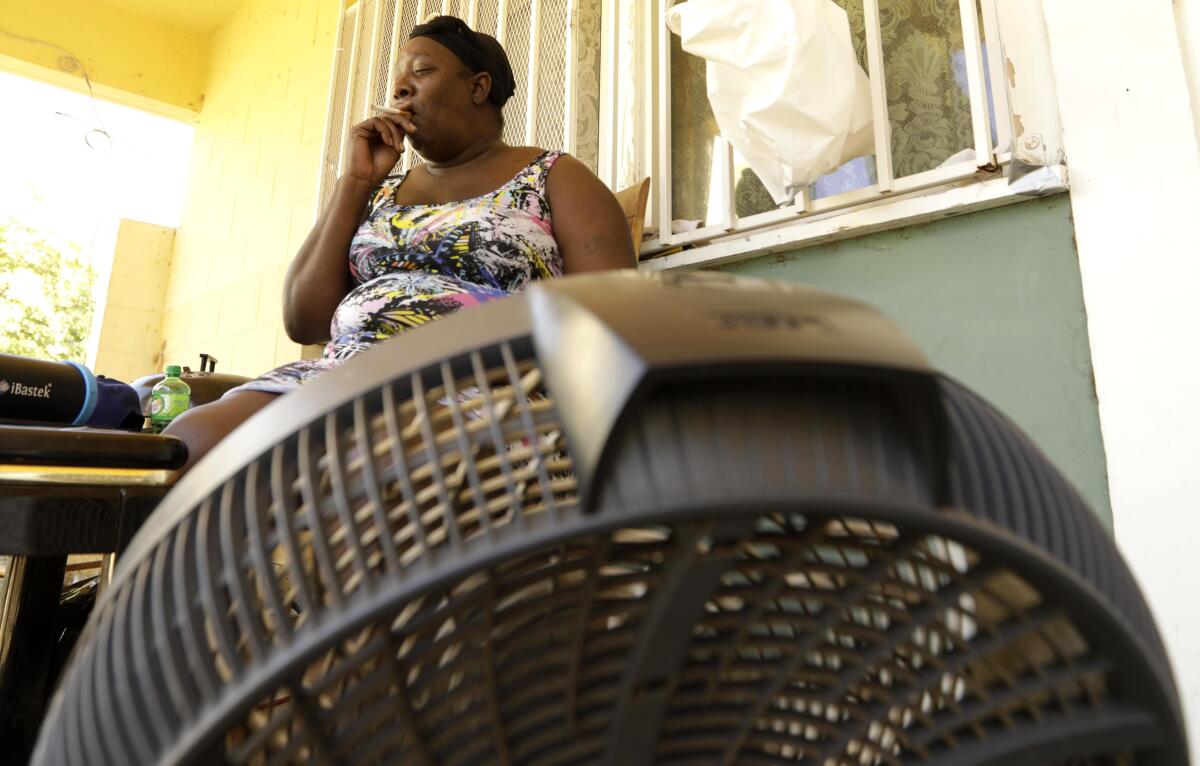Letters to the Editor: You know what can keep the AC on in summer? Rooftop solar

- Share via
To the editor: Just as the California Public Utilities Commission is poised to cripple the rooftop solar industry, an article in the scientific journal Earth’s Future is published predicting not only rising temperatures and increased demand for air conditioning, but also insufficient power to keep AC units functioning when needed most.
If the state will be short of power, especially power that is not produced with additional greenhouse gas emissions, why curtail home solar systems?
Our electrical regulatory system was created for early 20th century conditions. If we were creating a system for the 21st century with global warming bearing down on us, what would it look like? Probably not like the existing disjointed system that guarantees profits for the big utility companies.
Todd Collart, Ventura
..
To the editor: Californians could lose air conditioning for roughly one week each summer because demand will exceed supply. You report that Los Angeles might have an even higher number of such days.
Yet California law now enables localities to increase density by a factor of four in areas formerly zoned for single-family residences. This radical policy sets no condition for beefing up utilities before the building frenzy begins. It shows equal disregard for the environmental impact of losing mature trees and permeable ground.
Our elected officials and The Times Editorial Board are all-in on this, and those who question the scheme are dismissed as NIMBYs.
NIMBYs? We are Cassandras. Like the figure in Greek mythology, our warnings go unheeded, and by the time we see the predictable consequences of these short-sighted policies, it will be too late.
Shelley Wagers, Los Angeles
..
To the editor: This article completely ignores the elephant in the room, namely the future of electric vehicle charging.
By 2035, all new cars and passenger trucks sold in California must be zero-emission, and those cars will have to be charged. Today, about 10% of the cars sold in California are battery-driven, and already we are seeing brown-outs.
Also, in some parts of the state new housing must use electricity for cooking and heating. And electric-powered aircraft are also under development. What about railroad locomotives, farm equipment and construction equipment?
One gallon of gasoline, diesel fuel or jet fuel produces an enormous amount of energy, and all this energy must be replaced by electric energy to charge all those batteries. Where are we going to get all this electricity?
Larry Pearson, Burbank





